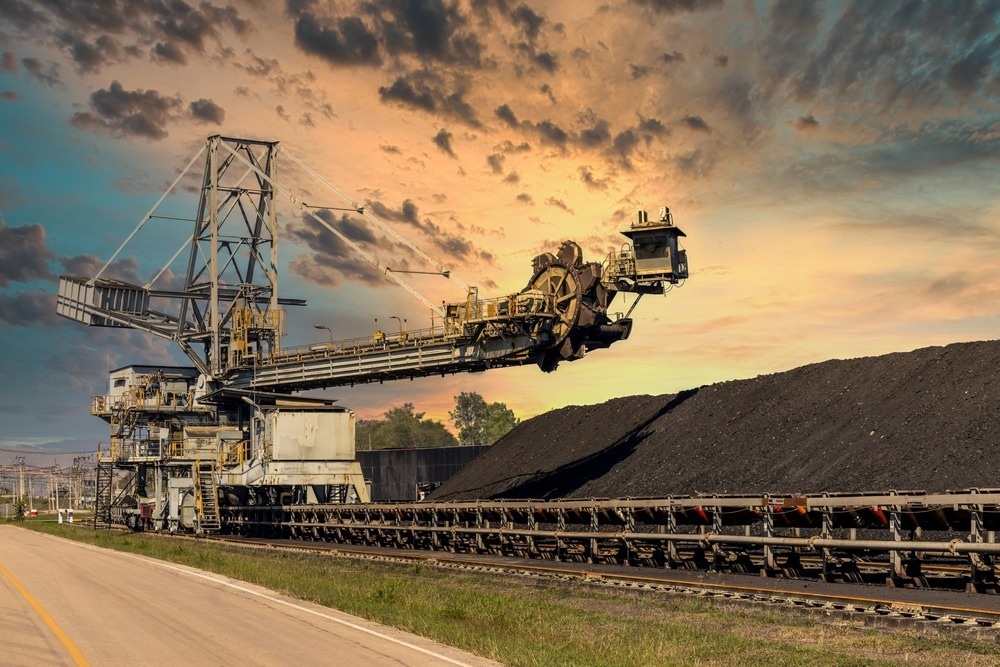In a recent article published in the journal Scientific Reports, researchers addressed the challenges faced in the blasting of burnt rock within open-pit coal mines situated in the Xinjiang region of China. The study emphasizes the necessity of understanding the factors influencing blastability and developing standardized evaluation models to guide blast design and improve operational efficiency.

Image Credit: Avigator Fortuner/Shutterstock.com
Background
The study highlights prior research related to rock blasting and the specific characteristics of burnt rock in Xinjiang’s open-pit mines. It notes that burnt rock is characterized by developed joint fractures, variable density, and altered mechanical properties, which influence its response to explosive loading. Such properties can lead to unpredictable blast results, excessive vibration, or incomplete fragmentation, thus hindering mine productivity and safety.
The regional geological conditions, especially the prevalent arid and semi-arid climate in Xinjiang's Gobi Desert, further complicate blasting operations due to dust generation and environmental considerations. Previous studies primarily focused on general rock blasting mechanics or region-specific cases; however, there was a lack of comprehensive, quantitative models tailored to the unique properties of burnt rock in this locale. These gaps necessitated a detailed investigation into the specific factors influencing blastability and the development of evaluation standards suitable for Xinjiang’s geological conditions.
The Current Study
The research employed a combination of field investigations, theoretical analysis, numerical simulations, and statistical methods to establish a robust evaluation framework. Fieldwork involved collecting data from six representative open-pit coal mines in Xinjiang, focusing on parameters such as joint density, crack length, crack propagation radius after blasting, and peak blasting stress.
These data were gathered through direct measurements, sampling, and testing. To quantify the influence of these parameters on blastability, the authors developed a mathematical model utilizing the entropy weight method—a statistical approach to determine the weight or importance of various factors based on their variability and informational contribution.
This process involved calculating weight coefficients for factors such as joint density, crack length, expansion radius of cracks after blasting, and peak stress.
Subsequently, a fuzzy comprehensive evaluation method was adopted to integrate these factors into a single blastability index (denoted as G), which provides a hierarchical classification of the burnt rock’s explosiveness. The model divides blastability into five standard levels—ranging from extremely easy to blast to extremely difficult—based on the calculated index.
To validate and apply the model, the researchers conducted numerical simulations to determine the expansion radius of cracks and the peak stress, complemented by extensive on-site measurements, ensuring the model's applicability and reliability.
Results and Discussion
The results reveal that the blastability of burnt rock in the studied areas varies primarily due to the density of original joint fractures, the length of existing cracks, the extent of crack propagation after blasting, and the maximum blasting stress experienced by the rock mass.
Through statistical analysis and modeling, the authors established that the blastability index G effectively consolidates these influencing factors into a quantifiable measure. The computed G values for the six mines ranged from approximately 12.5 to 13.3, positioning most within the ‘difficult to blast’ (Level III) classification, with one site classified as ‘more difficult to blast’ (Level IV). These results indicate that while some burnt rocks are relatively more amenable to blasting, most present significant challenges that require tailored approaches.
The discussion emphasizes the importance of using the evaluation model for planning blasting operations. By accurately assessing blastability levels, operators can optimize blast parameters such as explosive quantity, hole spacing, and detonation sequences, thereby enhancing fragmentation efficiency while reducing vibrations and dust.
For range of blastability levels, the authors recommend specific modification strategies, such as increasing explosive consumption or adjusting blast hole parameters for more difficult rocks. They also discuss how numerical simulations supported the empirical data, providing insights into crack propagation behavior under various conditions. The analysis underscores that geological heterogeneity plays a secondary role compared to the joint structure and crack characteristics, validating the model’s focus on these key indicators.
Conclusion
Understanding and quantifying the influence of rock joint fractures, crack length, crack propagation, and peak stress are fundamental to evaluating the blastability of burnt rock in Xinjiang's open-pit coal mines.
The authors successfully developed a mathematical model incorporating these variables, employing entropy weight and fuzzy evaluation techniques, resulting in a practical classification standard.
Most of the studied mines exhibited difficulty levels consistent with prior expectations, highlighting the need for tailored blast designs that account for the specific properties of burnt rock to improve efficiency and safety.
This study offers a systematic, quantitative approach to assessing burnt rock blastability, addressing a critical challenge in Xinjiang’s mineral extraction industry. The model facilitates optimized blast designs and supports sustainable and safe mining operations in complex geological environments.
Source:
Song Z., Wen Y., et al. (2025). Analysis of the impact of rock joint cracks on blastability of burnt rock in Xinjiang open pit coal mines. Scientific Reports 15, 16179. DOI: 10.1038/s41598-025-99992-9, https://www.nature.com/articles/s41598-025-99992-9